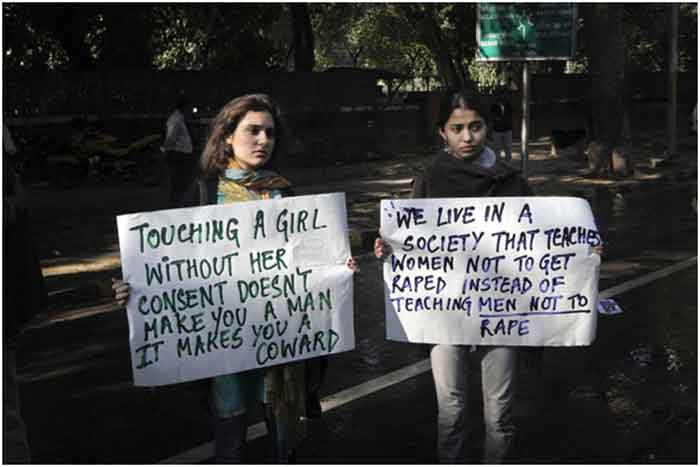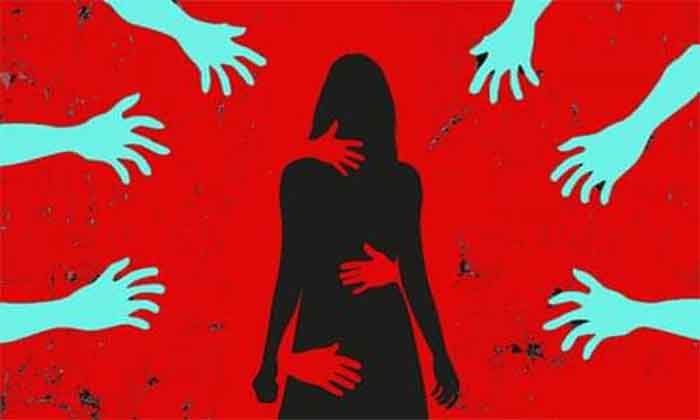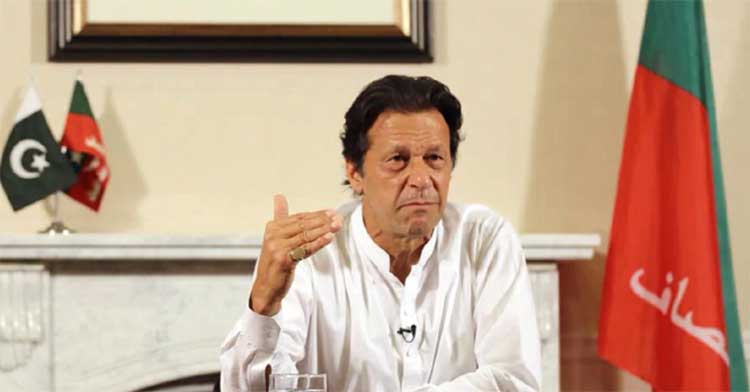
What is wrong with some men that in the time of Covid-19 they are raping women of all ages? Rape, the most intimate of crimes is happening every day, everywhere in the world. Raping does not fall under behavioral or mental disorder, it is a criminal offense. Sadly, the incidents of rape did not stop while nations across the globe went under stay-at-home orders during the coronavirus pandemic. Experts fear cases may be getting even worse due to stress and isolation. Is pandemic triggering sexual aggression in men? Could lockdowns, social distancing, wearing a mask, nonstop handwashing, sanitizing and all the other associated uncertainty really be causing men to be aggressive? We all know that rape culture is a man problem. It is not the job of a woman to dismantle the existing culture pertaining to sexual assault and rape. How long do we need to buy into the established idea that testosterone is a real kick-starter for violence and it actually forces violence behavior in men? Getting raped is never a woman’s fault. Yet, society and many men blame the victim and revictimize those women who are victims of sexual abuse. Instead of revictimizing women who want justice in a court of law, men should own up and protest a system that puts importance on them over what a woman has to say in instances of rape and sexual assault. Avoiding victim blaming is really important so that a sexually assaulted woman does not internalize blame on herself. Not to mention the trauma she will go through throughout her life. By some estimates one out of four women will be the victim of a sexual assault in her lifetime. Why do men rape women? Psychologists believe a lack of empathy, narcissism, and intense feelings of hostility towards women are some of the reasons. Every year, hundreds and thousands of rapes are reported in my home country Bangladesh. In similar cultures around the world, patriarchy and dominance over women are often expressed through “dehumanization” where women are seen inferior and powerless to men. As a result, it becomes much easier for women to become the targets of men’s desire and aggression. In those societies rape stories are so common that a lot of the time it doesn’t even make into the newspapers. Yet some stories of rape and assault do stand out for being deeply disturbing because of the brutal nature of it. Other similar incidents just become yesterday’s news. Why are men raping women at an alarming rate now? Is it because the quarantine and stay-at-home efforts are dragging on too long? In the past evidence showed that sexual assaults increase during states of emergencies.
During this Covid-19 pandemic rape has taken center stage along with the novel coronavirus across Bangladesh’s many districts. In the last week of September alone three rapes have continued to gain momentum after they were vastly publicized in all types of social media platforms. The first one is a 37-year-old woman who was abducted, beaten and gang raped by a group of hoodlums in Noakhali (south-eastern Bangladesh). The gruesome act was videotaped while the woman begged and pleaded with them to let her go. Later it was uploaded on Facebook by them. These rapists were calculating and stalking her. They raped her before. The second victim is a newly-married woman who was raped while she was visiting a college campus in Sylhet (north-eastern BD) with her husband. A group of thugs spotted them and robbed them first, and then took the woman in a room of a student hostel, tied up the husband, and raped her in front of him. It was reported that the woman seemed to have fallen prey to the goons as they were motivated by impulse seeing her to be a beautiful woman. The third one is the rape of an underage indigenous girl inside a Catholic Church in Rajshahi (mid-western BD). She went missing after she went cutting grass for the cattle. Later it was established that the perpetrator is none other than Father Pradeep Gregory, parish priest of St. John Mary Vianney’s Church. 41-year-old Father Gregory had kept the girl in his church residence for three days. Later the girl’s family and locals rescued her. “The church authorities kept the girl with the nuns and told the family that she would be returned if they withdraw their police complaint. The church also offered to bear all expenses of the girl until she turns 18.” The Bishop of Rajshahi archdiocese told the media that he presumes someone is innocent until proven guilty. Father Pradeep is in police custody now.
The list can go on and on about the way how the perpetrators of such horrific crimes can influence the religious leaders, the local authorities, and law enforcement to cover up the criminality by flexing their muscles as some of them are often members of the student wing of the ruling party. With their political influence and back up, often rape cases never make it to the court. The lives of the women who are raped forever change. The victims every so often leave the area with their families to avoid further victimization and threats. It has happened time and again. With detachment their rapists get away by dehumanizing them.
Bangladesh’s Women and Child Repression (Prevention) Act 2000 classifies sexual intercourse with anyone below the age of 16 as rape even if it is consensual, with a maximum punishment of life imprisonment.
In the wake of protests over the growing number of rape incidents, the government is going to amend the Women and Children Repression Prevention Act, 2000, to make death sentence the highest punishment for committing rape.
Nationwide protest against the recent rape incidents flared up after the Facebook video tape of the Noakhali woman naked, bruised and crying for mercy went viral. The question remains why has the government and law enforcement failed to prepare for the uptick in sexual violence? At the time when they were assessing public health measures they should have taken into account that sexual aggressions and assaults will be on the rise. Since the beginning of Covid-19, a Beijing based NGO Equality reported seeing a sudden surge in calls to its helpline in February. Bangladesh’s fragile system along with the law enforcements’ unwillingness and inability in preventing sexual crime is the main reason as to why the country hasn’t been able to curve the violence on women. If the victim comes from a poor family, no one in the local thana pays attention to her plight. More often than not she is turned away before she can lodge a complaint and very often the officer in charge refuses to enter the complaint in the ledger book on behalf of the victim. A woman from a poor background does not know how to navigate the complicated legal system and the perpetrators do take advantage of her situation and remains free to rape others. The culprits simply do not take any kind of accountability for their crime.
It really enraged me that the civil society members and some prominent rights activists started to demand justice only after the Noakhali rape was sensationalized with the aid of a video footage of the actual rape. On any given day when you open a Bangladesh media site there will be at least one or two incidents of rape that had happened somewhere in Bangladesh. We do not hear any nationwide outcry about such cases of rape. Now the civil society along with everyone else is demanding justice for the victims, and for stricter enforcement of the current laws, and for the amendments of current laws. It is now a priority for the Law Minister as the instruction came from the Prime Minister herself. Bengalis live for drama and everything has to be measured with a melodramatic twist. While at it not many think about the victim’s right to privacy and the psychological stress and trauma that she is dealing with.
The Facebook post of the Noakhali woman getting assaulted was watched by thousands until a directive came from the higher-ups to take down the video. What kind of sick-minded men and women would actually want watch such a video? Evidently many had watched it and protested on their Facebook wall. Easy access to the internet largely contributes to such behavior. What does it say about the mental health of such people? Very early on, I had made a decision to stay away from social media platforms. I do not have any abnormal curiosity and perversion of watching another woman being tormented in a graphic rape video. Watching such a video reflects on the attitude of a larger society. Such a tendency in others to be voyeuristic witnesses to the misery that had fallen on another human being is simply appalling. But it is hard to avoid what is covered in the media. And the effect of such news is the same — simply horrific.
In many parts of Bangladesh, sexual assault forensic exams are not readily available in rural upazila (sub-units of a district) hospitals. Sometimes there is no rape kit to do a rape test. If the victim is lucky and her story is believable then she is sent to one of the One Stop Crisis Centers in the next town. During the Covid-19 time the very few forensic nurses who are working may not be available in those hospitals or crisis centers. Without collecting evidence of rape such cases will be difficult to prove later on and chances are without evidence such cases will be thrown out before a court hearing. Many forensic experts fear the novel coronavirus is preventing sexual assault victims from coming forward to seek medical care, report the crime, and have physical evidence collected. Without a rape kit it is not possible to collect DNA evidence from a victim’s body, clothes, and belongings. That test is crucial as that evidence is needed to enter the justice system. A rapist knows such things and that is why they are more active now than before as law enforcement people are busy with other pressing matters than pay attention to a poor rape victim who does not know how to navigate the system.
In the USA, national organizations like RAINN and NSVRC have scrambled to increase support they offer online and move their staffs to remote locations where their work can remain confidential, the more than 1,500 rape crisis centers across the country have faced a crisis of their own in responding to the coronavirus pandemic.
“Closed shelters, cancelled counselling services and diverted resources are also severely impacting a range of medical, psychological and legal services required to support rape survivors. And the fear of the virus spreading adds to barrier in accessing services. Survivors of sexual violence may be less willing to seek help because of perceived risks of contracting Covid-19, fearing infection and potentially transmitting the virus to their families.”
The Covid-19 cases is straining and overwhelming the health services, and it hasn’t been able to prioritize in addressing and training staff about violence against women during the ongoing crisis. As it is sexual violence is an under-reported crime and it has been pushed into the background because of the coronavirus. Even before, a sexual assault victim had to fight hard against the socio-cultural and institutional barriers in reporting the crime. A woman’s own defense team sometimes questions the validity of her account and the prosecution often sides with the perpetrator when the case gets to court.
Feminist author Gloria Steinem poses the real issue at the heart of the rape dilemma. “We have to stop talking about who gets raped and talk about who rapes. Somebody is doing these things. And we have to identify who they are.” Who is that somebody? Why do men rape women? Sherry Hamby, a research professor of psychology at the University of the South in the US state of Tennessee, told DW that “sexual assault is not about sexual gratification or sexual interest, but more about dominating people.” The hostile attitudes towards women support this idea. The rapists’ motives are varied and difficult to quantify. Sometimes there are common factors and other times there are not. Michael Kimmel is a sociologist at the State University of New York who has received international recognition for his work on men and masculinity. “Violent men often view their actions as revenge or retaliation. They say, women have power over me because they’re beautiful and sexual and I want them and they elicit that and I feel powerless,” he says. “Just listen for a minute to the way in which we describe women’s beauty and sexuality. We describe it as violence against us. She is a knock-out, a bomb-shell, dressed to kill, a femme fatale, stunning, ravishing. I mean all of these are words of violence against us. It’s like, wow, she knocked me out. So the violence then, or the aggression or the sexual violence is often a way to retaliate.”
In her book, Sex, Art and American Culture, Camille Paglia calls these “somber truths” women must accept. “Feminism keeps saying the sexes are the same,” she writes. “It keeps telling women they can do anything, go anywhere, say anything, and wear anything. No, they can’t. Women will always be in sexual danger.” She may be right, but that doesn’t necessarily make rape a woman’s responsibility.

During the 2012 Nirbhaya gang rape case in Delhi I saw the above photo and the image of two young girls holding up two posters reminded me of the old saying, A picture is worth a thousand words.
When assaulted, there is a trivialization that leads to a culture of victim blaming. A young woman or an underage girl most definitely will have a hard time to accept such wrong as their own doing. People often say that the girl must have invited it with her revealing clothes or by her sensual nature et cetera. All this finger pointing at the victim frequently are done by the adults whose responsibility is to teach a young girl how to spot a predator or what to do in a compromising situation.
The media, biology and culture may be contributing factors, but the majority of men — those who are the product of the same biology, the same culture — don’t rape women.
In June, a statement was released by the United Nations on International Day for the Elimination of sexual Violence in Conflict. It read, “Combatting impunity for sexual violence is central in deterring and preventing conflict-related sexual violence (CRSV) crimes. It is also essential component in redress for victims. Among many other aspects, COVID-19 is significantly and detrimentally impacting the rule of law, including by limiting the availability and capacity of law enforcement and judicial authorities to respond to CRSV. Moreover, the pandemic hinders the processing of reports of incidents of sexual violence and risks deprioritizing services needed by survivors, including in shelters, health care services, police, and justice sector services.”
Fast facts
Globally, even before the COVID-19 pandemic began, 1 in 3 women experienced physical or sexual violence mostly by an intimate partner
- Emerging data shows an increase in calls to domestic violence helplines in many countries since the outbreak of COVID-19.
- Sexual harassment and other forms of violence against women continue to occur on streets, in public spaces and online.
- Survivors have limited information and awareness about available services and limited access to support services.
- In some countries, resources and efforts have been diverted from violence against women response to immediate Covid-19 relief.
Zeenat Khan writes from Maryland, USA
SIGN UP FOR COUNTERCURRENTS DAILY NEWSLETTER













































